Resources
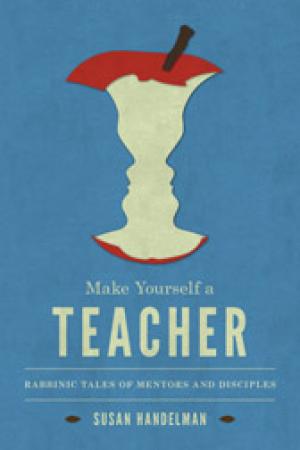
National Jewish Book Award finalist in Contemporary Jewish Life and Practice category Make Yourself a Teacher is a teaching book and a book about teaching. It discusses three dramatic, well-known stories about the student and teacher Rabbi Eliezer ben Hyrcanus from the Oral Torah. The stories of R. Eliezer serve as teaching texts and models for reflection on the teacher/student relationship in the Jewish tradition and in contemporary culture, with special emphasis on the hevruta mode of Jewish learning, a collaborative process that invites the reader into a dialogue with teachers past and present. Susan Handelman considers how teacher/student relations sustain and renew the Jewish tradition, especially during troubled times. As a commentary on historical and contemporary educational practices, she asks a range of questions about teaching and learning: What is it that teachers do when they teach? How do knowledge, spirituality, and education relate? What might Jewish models of study and commentary say about how we teach and learn today? Handelman not only presents pedagogical issues that remain controversial in today's debates on education but she also brings the stories themselves to life. Through her readings, the stories beckon us to sit among the sages and be their students. Susan Handelman is professor of English at Bar-Ilan University, Israel. (From the Publisher)
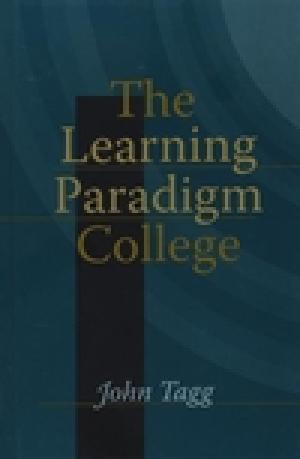
In The Learning Paradigm College, John Tagg builds on the ground-breaking Change magazine article he coauthored with Robert Barr in 1995, “From Teaching to Learning; A New Paradigm for Undergraduate Education.” That piece defined a paradigm shift happening in American higher education, placing more importance on learning outcomes and less on the quantity of instruction. As Tagg defines it, “Where the Instruction Paradigm highlights formal processes, the Learning Paradigm emphasizes results or outcomes. Where the Instruction Paradigm attends to classes, the Learning Paradigm attends to students.” (From the Publisher)
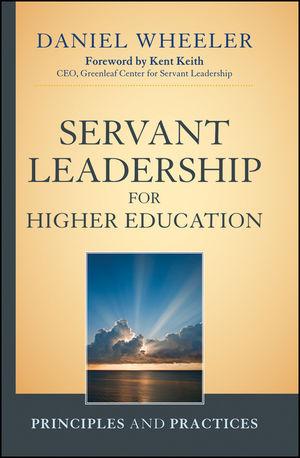
If higher education is to fulfill its mission, the academy must continue to emphasize the ideals of thought, reflection, and development as well as action. This book stresses the importance of understanding that service is a pre-requisite to leadership. This practical book contains leadership principles and strategies and is based on research and best practice. The book is organized around ten principles of servant leadership and how these principles apply to common issues faced in departments and institutions of higher education. The situations addressed are representative so that it is easy to see how the principles apply to other concerns or issues. (From the Publisher)
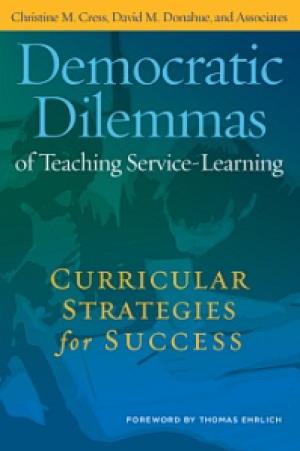
A college student wants to lead a campaign to ban a young adult novel from his child’s elementary school as his service-learning project in a children’s literature course. Believing the book is offensive to religious sensibilities, he sees his campaign as a service to children and the community. Viewing such a ban as limiting freedom of speech and access to information, the student’s professor questions whether leading a ban qualifies as a service project. If the goal of service is to promote more vital democratic communities, what should the student do? What should the professor do? How do they untangle competing democratic values? How do they make a decision about action? This book addresses the teaching dilemmas, such as the above, that instructors and students encounter in service-learning courses. Recognizing that teaching, in general, and service-learning, in particular, are inherently political, this book faces up to the resulting predicaments that inevitably arise in the classroom. By framing them as a vital and productive part of the process of teaching and learning for political engagement, this book offers the reader new ways to think about and address seemingly intractable ideological issues. Faculty encounter many challenges when teaching service learning courses. These may arise from students’ resistance to the idea of serving; their lack of responsibility, wasting clients’ and community agencies’ time and money; the misalignment of community partner expectations with academic goals; or faculty uncertainty about when to guide students’ experiences and when direct intervention is necessary. In over twenty chapters of case studies, faculty scholars from disciplines as varied as computer science, engineering, English, history, and sociology take readers on their and their students’ intellectual journeys, sharing their messy, unpredictable and often inspiring accounts of democratic tensions and trials inherent in teaching service-learning. Using real incidents – and describing the resources and classroom activities they employ – they explore the democratic intersections of various political beliefs along with race/ethnicity, class, gender, ability, sexual orientation, and other lived differences and likenesses that students and faculty experience in their service-learning classroom and extended community. They share their struggles of how to communicate and interact across the divide of viewpoints and experiences within an egalitarian and inclusive environment all the while managing interpersonal tensions and conflicts among diverse people in complex, value-laden situations. The experienced contributors to this book offer pedagogical strategies for constructing service-learning courses, and non-prescriptive approaches to dilemmas for which there can be no definitive solutions. (From the Publisher)
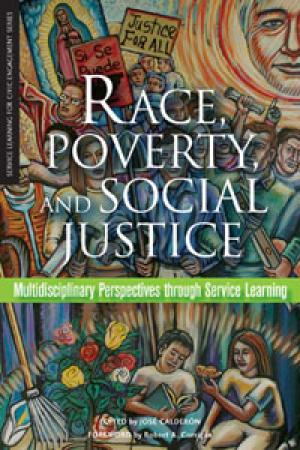
This volume explores multiple examples of how to connect classrooms to communities through service learning and participatory research to teach issues of social justice. The various chapters provide examples of how collaborations between students, faculty, and community partners are creating models of democratic spaces (on campus and off campus) where the students are teachers and the teachers are students. The purpose of this volume is to provide examples of how service learning can be integrated into courses addressing social justice issues. At the same time, it is about demonstrating the power of service learning in advancing a course content that is community-based and socially engaged. To stimulate the adaptation of the approaches described in these books, each volume includes an Activity / Methodology table that summarizes key elements of each example, such as class size, pedagogy, and other disciplinary applications. Click here for the table to this title. (From the Publisher)

Written specifically for teaching assistants responsible for WAC or WID courses, A TA's Guide to Teaching Writing in All Disciplines provides the practical advice that teaching assistants — no matter the discipline — need in order to teach and evaluate writing effectively. This informative text is perfectly suited to a teaching assistants' training course, or it can serve as a reference for teaching assistants to use on their own. (From the Publisher)
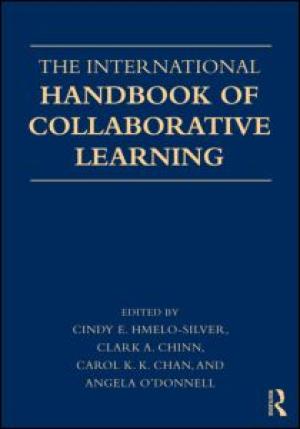
Collaborative learning has become an increasingly important part of education, but the research supporting it is distributed across a wide variety of fields including social, cognitive, developmental, and educational psychology, instructional design, the learning sciences, educational technology, socio-cultural studies, and computer-supported collaborative learning. The goal of this book is to integrate theory and research across these diverse fields of study and, thereby, to forward our understanding of collaborative learning and its instructional applications. The book is structured into the following 4 sections: 1) Theoretical Foundations 2) Research Methodologies 3) Instructional Approaches and Issues and 4) Technology. (From the Publisher)
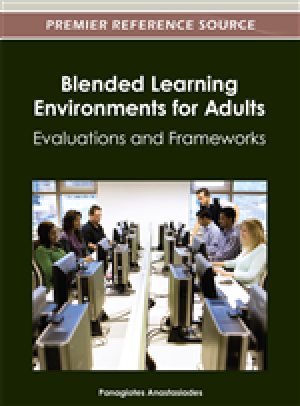
There is a general notion that adult education literature generally supports the idea that teaching adults should be approached in a different way than teaching children. Adult learners include working adults with family responsibilities, older workers who may not feel confident about returning to school and people who are currently in the workforce and who need to upgrade skills and knowledge. The combination of synchronous and asynchronous transmission with face to face instruction allow for the implementation of a new Blended Collaborative Learning Environment, which is flexible in terms of location, time, and pace of adult learners. Blended Learning Environments for Adults: Evaluations and Frameworks demonstrates the view that Information and Communication Technologies should not be considered as a neutral teaching medium, but instead be implemented under pedagogical conditions; aiming at the development of critical thinking through their creative integration into the social and cultural context. This comprehensive collection brings a group of scholars in order to build up a pedagogical approach and analytical implementation steps and directions for designing and implementing Blended Learning Collaborative Environments for adults. (From the Publisher)

Linda Cannell served churches and theological schools in Canada for about twenty years before joining the faculty of Trinity Evangelical Divinity School in Deerfield, Illinois in 1990. While at Trinity, she served as a professor of Educational Ministry and directed the PhD in Educational Studies program. She now serves as Lois W. Bennett Distinguished Professor of Educational Ministries at Gordon-Conwell Theological Seminary in South Hamilton, Massachusetts. (From the Publisher)
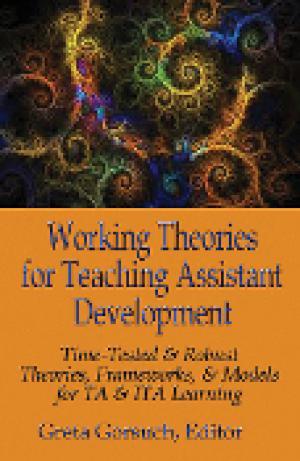
This extensive, edited volume showcases established and emerging scholars in the field of Teaching Assistant (TA) and International Teaching Assistant (ITA) education. Working Theories goes beyond reporting good practices or program descriptions, which typically comprises many books on TA and ITA development.  Instead, Working Theories places time-tested, robust theories, frameworks, and models of TA and ITA learning and development at the center of graduate student education by providing a scholarly venue for description, explication, and application of these theories. In turn, these theories and models from psychology, sociology, pedagogy, discourse analysis, and second language learning will be presented in such as way as to inform good practice, but above all, motivate future research. (From the Publisher)